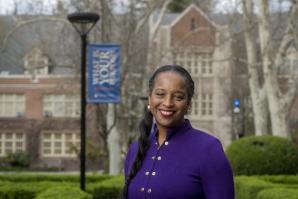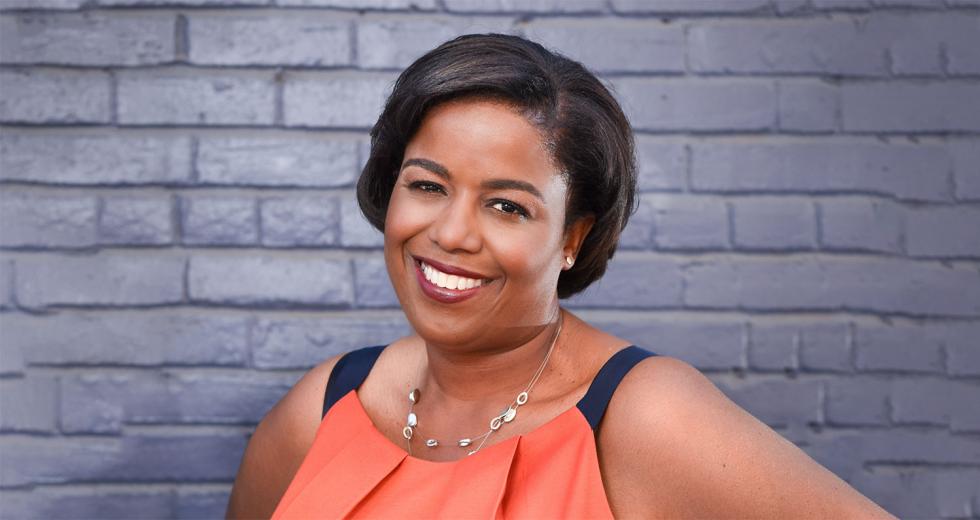An old maxim has it that if you want something done, ask a busy person. Visit Sacramento, the public-facing name of the Sacramento Convention & Visitors Bureau, went one better: It asked a self-confessed introvert to step into the spotlight as its face of diversity in the hospitality industry.
In April, Sonya Bradley, a veteran of Visit Sacramento’s public relations and marketing communications department for more than two decades, was named the bureau’s first chief of diversity, equity & inclusion. She downplays her own importance in her new role but not the need for the role itself.
“After the racial upheaval triggered by the killing of George Floyd, and our own local race-related trauma” — including the Stephon Clark police shooting here and its aftermath of street protests — “responsible businesses throughout the country started taking a closer look at their own approach to diversity in hiring and promoting and even targeting products and services.”
In short, she continues, “People got more introspective than they’d thought they needed to. It’s not as though we were all doing something horribly wrong beforehand, just that we needed to do more. It had to do with certain industries and organizations possibly having unconscious bias.”
Comstock’s spoke with Bradley in May as she began to settle into her new role.
Why did Visit Sacramento even need to make this adjustment or commitment to diversity? Hasn’t it always shown no bias in going after the conferences and conventions it lures to the region?
We felt that our marketing materials might not reflect the true diversity of the region. After that Harvard study (a 2002 Time article using research by the Civil Rights Project at Harvard University, which declared that Sacramento was the most diverse city in the United States), we felt good about ourselves, but maybe didn’t realize how much of our story needed to be told and attractions promoted to groups that may simply not have considered holding events here. We wondered, can we improve the experience for visitors — but also, and this is key, get groups to even consider coming here?
What did you find was being overlooked?
I think different cultural groups didn’t think they’d like river rafting and seeing our historical towns. Sometimes, this can involve exposing people to what may be “poor history,” meaning eras or events we’re not necessarily proud of.
Do you mean various legacies of the area? Not long before this chat, the city council of Placerville had voted to remove the hangman’s noose from its logo, since it summoned up a lawless era, which also included lynching.
Right. The point is that it’s still history and can still be talked about. People of color are just as interested in history as whites are. So in my new role, I may end up having some awkward or downright uncomfortable conversations with people in these towns and with their tourism boosters, but it’s all about dialogue.
For two decades, as a marketing and PR person, you stayed largely behind the scenes and probably didn’t have to endure many of what you call “uncomfortable conversations.” What made you want to take on a persona-changing job like this? I imagine as the world continues to open up, you’ll be giving talks to small and large groups about the importance of diversity here.
Oh, definitely. But it’s nice to be able to not only strategize programs but also execute them. In marketing and public relations, you strategize but then your wonderful team puts most of it into play. For the moment, I’m almost the entire team, though I get terrific support from Karlee Cemo-McIntosh, who answers to me but also kind of manages me. (Laughs.) She’s a real force.
Whose idea was it to create your position? Did pressure come from the Visit Sacramento board, which includes, after all, business leaders?
Not at all. Mike Testa, the president and CEO of Visit Sacramento, is a very thoughtful leader, and he saw other leaders taking a fresh look at promoting diversity. I think he also saw that as young people of color come up through the ranks in the tourism and hospitality industry, not enough of them are in leadership roles. He thinks we can set an example as well as draw people here who just didn’t know what the region has to offer.
Is the initial effort going to be largely symbolic or are approaches really going to change — and if so, how?
Well, let’s start with the approach that may sound superficial but really isn’t. We need to start showing people of all cultures, in our brochures and throughout social media, enjoying Sacramento: hiking, biking, visiting museums, seeing live theater, ballet, going to Sacramento Philharmonic concerts and rock concerts, celebrity lectures and those by notable leaders in a variety of fields.
The Asian community offers a good example of what we have to offer in, say, our Little Saigon district, our restaurants and shrines and temples. The Vietnamese, Japanese and other cultures who make up the fabric of the greater Sacramento region. And what about the Chinese immigrants who helped build the railroad and the town of Locke?
Downtown and Midtown Sacramento are extremely important to our business because that’s where our hospitality activity is centered, for the hotels and conferences. But we also have to let, for example, an organization of Black lawyers, Latinx accountants and Asian American businesspeople know there are things for them to see and do here if they’re willing to get off the beaten path. The point is that when they visit “the most diverse city in the United States” — we’re still up there, I’m just not sure if we’re still No. 1 — they want to see diversity. They want to see and experience things that speak to their own culture and history.
How will your personal life change now that your job description all but says, “Must be extroverted”?
I really like it. I like talking to community leaders and people who knew me in another role for all these years, and find out what they need, how we can form alliances, whether what their organizations do is directly related to tourism or not. The fact is, we all benefit by Sacramento being diverse and vibrant.
Does that extend to economic development? Is Visit Sacramento dipping its toes in business relocation?
No, that’s the job of Greater Sacramento and Barry Broome. But I can see that if you visited here once, liked what you saw and then were thinking of moving your company, your tourism experience would all but have to influence your decision down the road.
You have family in the Bay Area, Southern California and locally. How do they feel about your new job?
(Laughs.) Well, I think this may be the first time my folks actually know what I do for a living.
Edited for length and clarity.
–
Stay up to date on business in the Capital Region: Subscribe to the Comstock’s newsletter today.
Recommended For You

Young Professionals Bring New Ideas for a Changing Economy
To open the annual Young Professionals issue, Comstock’s president and publisher considers Capital Region innovation.

How to Tell the Story of Sacramento
Comstock’s spoke to Visit Sacramento Brand and Community Engagement Director Karlee Cemo-McIntosh about how the organization has taken advantage of new opportunities over the past year.

A Culture of Deeper Learning
Mary Wardell-Ghirarduzzi, University of the Pacific’s inaugural vice president for diversity, equity and inclusion, on her plans for the role
Comstock’s spoke to Wardell-Ghirarduzzi about what she plans to
achieve at her alma mater.

Silver Linings
The pandemic has crushed most of the tourism industry, but some businesses have defied the odds
While many small and not-so-small businesses were roiled, some
have seen a windfall with people desperate to hop in their cars
and do something, anything, besides cook another dinner at home
and watch more Netflix.



